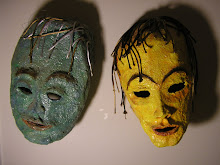I love this bread maker. I've had a lot of fun and eaten a lot of bread.
Easy-bake
It's a cool way to bake--you just put everything into one container, and then you don't have to worry about forgetting it, or timing the baking, etc.
I've baked way more bread than anything else since it arrived. The machine makes baking bread easier than baking brownies or cookies or whatever it was I used to bake.
It first arrived the Friday before Labor Day weekend 2020. I made so many loaves my kids were complaining that they were tired of the smell of fresh-baked bread.
You do need to experiment a bit to get good results.
Don't follow the recipes that come with the machine
The worst thing about this breadmaker is the recipe booklet. If you purchased this machine and only tried to follow the recipes in the booklet, you would think it was a terrible machine.
I don't know why the booklet only calls for all-purpose flour. The two recipes I tried following the booklet resulted in "cratering", that is did not come out well.
The King Arthur Flour website has a recipe that does work with all-purpose flour:
And see my previous blog entry for more recipe advice.
I tried the booklet's French bread recipe again, but this time with bread flour:
- The 1.5 lb recipe came out small, so I tried the 2 lb recipe the next day.
- The 2 lb recipe also did not rise to the top of the pan, but it was better.
- I didn't have kosher salt, so used a smaller amount of regular salt.
- It worked reasonably well with the delay-timer.
- My family complained that the crust is too tough, but the bread ready by 8am disappeared by late afternoon nonetheless. It isn't perfect, but it is decent and convenient.
Crust Color Setting is Only for White Bread Program
The booklet talks about setting the crust color for French bread, but crust color is not an option when using the French Bread setting. Could my machine be defective in that way?
I can't set it for the Whole Wheat program either. It really doesn't matter.
2-poud loaf?
It's best to make the 1.5 pound version of a recipe to see how high it rises in the machine before you try its 2-pound version. Some 2-pound versions work in the machine. Other ones rise in the baking so much that they lift the lid and look like a monster dough scene from a movie.
If you'll be around in the kitchen, you can experiment with a 2-pound recipe: just be ready to pull the loaf out to bake in the oven. If the bread is very high at the "take out the paddle" stage, you may want to pull out half the dough to bake in the oven. You can make them into rolls or something fun.
Never use the delay timer for a 2-pound loaf recipe you haven't tested first.
Cleaning
In the many experiments, sometimes the bread rose and cooked against the window of the bread machine. The easiest way to clean the machine is to put some water in the bottom of the bread pan and leave it inside the machine. The water will evaporate onto the window, which makes any crust that stuck there easy to wipe off. The bread pan is also easier to clean after that soaking.
I use a small brush (possibly a test-tube cleaner?) to clean the hole in the paddle.
Paddle is Metal. Metal retains heat.
When not using the delay timer, it is very useful to be able to hear the beep and take the paddle out. You still have the hole from the paddle pivot pole in the bottom of the loaf, but not the paddle shape or the paddle.
Sometimes the paddle remains in the machine when you dump out the bread. This happened more often after I used the machine for several months.
When the paddle is still in the bread:
1) Cut very carefully around so as not to wreck your bread knife or score a line on the paddle.
2) Remember that the metal paddle stays hot longer than the bread around it has cooled. Don't touch the paddle even if you've already been safely grabbing pieces of the warm bread around it.
Wire to pull out handle
The machine came with a weird wire loopy thingy to pull the bread pan handle up when it is hot. I found this hard to keep track of until I started hanging it on the knob of a cabinet near the machine. You can use a fork anyway for the same purpose.
It would be good if they built in a holder for this, if they're going to provide such a thing.
Fresh bread pan is hot
I was very glad for my silicone pot-holder mitts for pulling out the bread-pan and holding it sideways to dump out the bread onto the cutting board. Highly recommended. The fresh baked bread, pan, and paddle are very hot.
Loaf shape
The bread is the bread-machine upright non-standard shaped loaf. But the machine's countertop footprint is compact, and the machine is less expensive than the horizontal bakers.
I think the optimum way to cut it is to start at the flat end until the length of the loaf is about the height of a standard slice of bread. Then rotate the bread and slice from the puffy top to the sliced-off bottom. Others disagree.
Whatever the shape, fresh-baked bread tastes wonderful.
